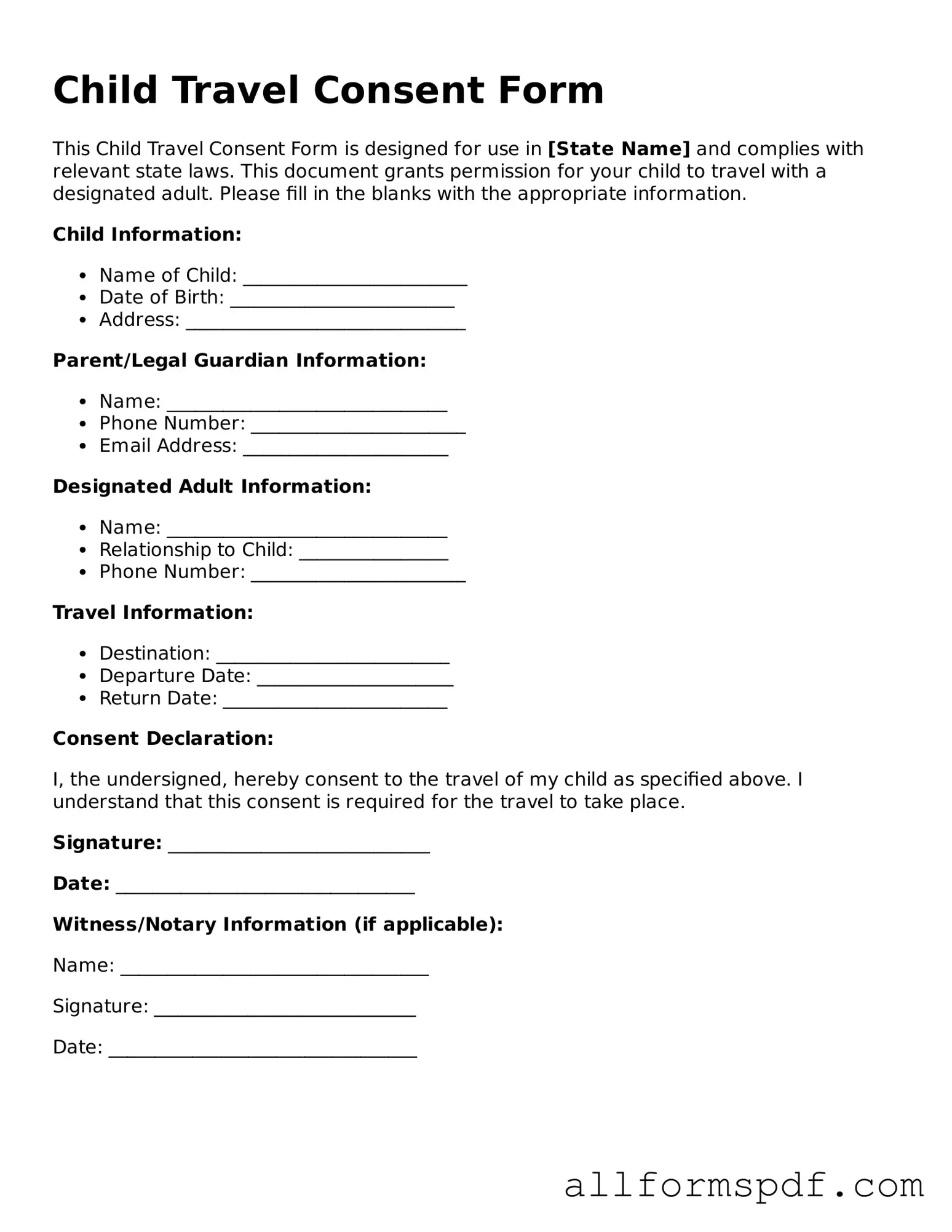Filling out the Child Travel Consent Form can seem straightforward, but many people make common mistakes that can lead to delays or complications. One frequent error is failing to provide complete information about the child. It’s essential to include the child’s full name, date of birth, and any other identifying details. Omitting even a small piece of information can create confusion.
Another mistake involves not obtaining the necessary signatures. Both parents or legal guardians must typically sign the form. If one parent is unavailable, additional documentation may be required to show consent. Forgetting this step can result in travel delays or even denial of boarding.
People often overlook the importance of providing accurate travel details. The form should include the destination, travel dates, and the name of the adult accompanying the child. Inaccurate or incomplete travel information can lead to misunderstandings at airports or border crossings.
Many individuals also fail to consider the legal requirements of the destination country. Some countries have specific regulations regarding child travel, and not adhering to these can cause significant issues. Researching the requirements ahead of time can save a lot of trouble later on.
In addition, not keeping a copy of the completed form is a mistake that can have consequences. Having a copy on hand can be helpful in case questions arise during travel. It’s always a good idea to have documentation readily available for reference.
Another common error is neglecting to update the form if travel plans change. If there are any modifications to the itinerary or the adult accompanying the child, the form should be revised accordingly. Failing to do so can lead to complications at the time of travel.
Lastly, people sometimes forget to check for any additional requirements that may be needed, such as notarization. Some jurisdictions require that the form be notarized for it to be considered valid. Ensuring that all necessary steps are taken can help avoid unexpected issues.
